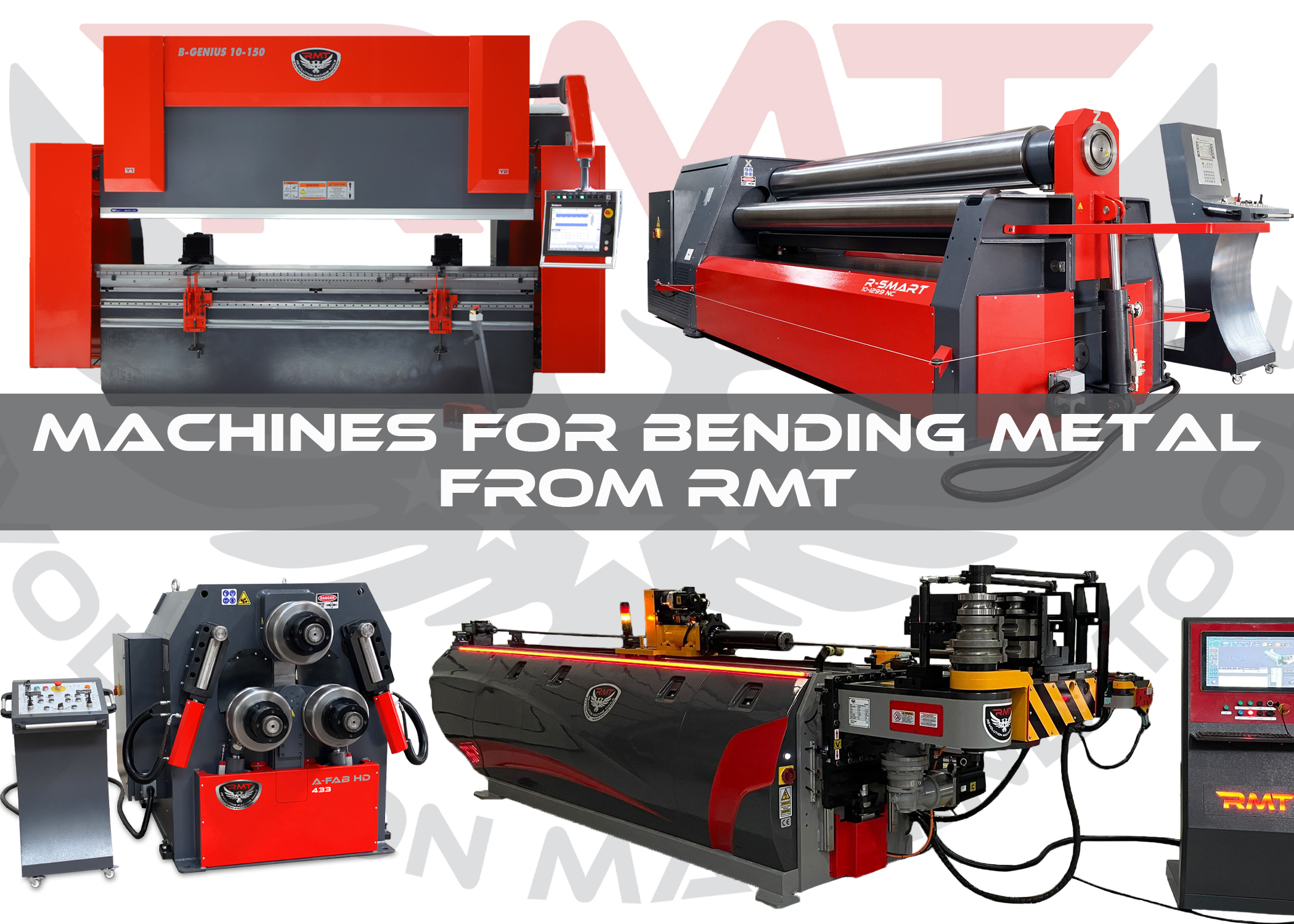Get Bent
As soon as the first metalworkers learned how to hammer copper into thin sheets, someone likely said, “That’s great, but can you put a bend in it?”
The art of bending metal is an age-old technique used in various cultures throughout history to create functional and decorative objects. The ancient Egyptians employed basic forging techniques as early as 4000 BCE, heating metal and then hammering it into shape. During the Bronze Age (3300–1200 BCE), metal bending and shaping techniques became more sophisticated with the advent of bronze, an alloy of copper and tin. Artisans in the Middle East, Asia, and Europe developed methods to cast, hammer, and bend bronze to create weapons, armor, and tools.
The discovery of iron significantly advanced metalworking techniques. Iron was stronger and more flexible than bronze, allowing for more intricate and durable objects. The Hittites are credited with developing iron smelting around 1200 BCE. The Greeks and Romans perfected metal bending techniques to produce everything from household items to complex armor and weapons. They used anvils, hammers, and rudimentary bending tools.
By the time of the Middle Ages, blacksmithing had become a highly respected craft in medieval Europe. Blacksmiths used forges, anvils, and various hammers and tongs to bend iron and steel into tools, horseshoes, weapons, and armor. The development of water-powered hammers (trip hammers) in the 12th century allowed for more efficient bending and shaping of metal. The Renaissance of the 14th through 17th centuries saw a revival in artistic metalworking, with increased use of iron and steel in both practical and decorative applications. Artisans experimented with more complex forms of metal bending for sculptures and architectural elements.
The advent of mechanization during the 18th and 19th centuries brought significant advancements in metalworking. Rolling mills, powered hammers, and presses allowed for more precise and large-scale bending of metal sheets and bars. During the 20th century, hydraulic and mechanical presses became common in manufacturing, allowing for mass production of bent metal components for automobiles, aircraft, and appliances. Modern CNC machines of the 21st century can create highly complex and precise bends, facilitating innovative designs in various industries.
If you work in any area of metal fabrication today, metal bending of some sort will likely play a significant role.
RMT—Your Source for Metal Bending Machines
Nestled near the base of the Rocky Mountains in Northern Utah sits Revolution Machine Tools, a national provider of many hundreds of different models of metalworking machines across the entire spectrum of fabrication. If your shop must cut metal, bevel metal, press metal, or punch metal, RMT will find the perfect machine to fulfill your needs.
If your requirements run to bending metal, however—whether in a sharp angle or a gentle curve—Revolution Machine Tools is your one-stop shop for whatever your project entails. RMT provides the following bending and rolling solutions:
- Press Brakes. RMT has 75 different models of premium CNC brakes, including standard hydraulic press brakes (3-5 axes), advanced hydraulic press brakes (7-16+ axes), and giant capacity hydraulic press brakes, as well as lines of press brakes that are electric or servomotor driven.
- Plate Rolls. Revolution Machine Tools carries 145 different models of plate and sheet rolling machines, from light-duty motorized initial pinch 3-rolls to hydraulic planetary and rectilinear 4-rolls. They also carry hydraulic variable geometry plate rolls. They even offer over a dozen models of aircraft rolls, the precision rolling/bending machines used to form the complex tapered shapes needed for the leading edges of aircraft wings. (And once you’ve rolled your tank body on an RMT plate roll, you can form the rounded head of your tank using a dishing-flanging-cutting machine from Revolution Machine Tools.)
- Angle Rolls. Need to roll a profile? RMT has 19 models of angle rolls available, from motorized to hydraulic machines. Each RMT angle roll can handle a variety of different solid and hollow profiles, including the L-shaped angle iron after which they are named. (Need to shear your angle iron or profiles like round and square bars? Revolution Machine Tools also carries several models of ironworkers.)
- Pipe and Tube Benders. While RMT’s angle rolls can be outfitted to put a curvature into a round pipe or square tube, if you regularly do tube bending, you should check out Revolution Machine Tools’ models of horizontal presses designed specifically for the task (and they also can be equipped to become miniature press brakes). In addition, if you need to produce your own large diameter pipes, RMT has partnered with Jae Won Industrial Machinery to provide US customers with their pipe making equipment, such as their spiral pipe mill line, used to roll strips of low carbon and low alloy steel into tube sections and then weld them into large capacity pipes.
Do More with Your Metal with RMT
When you need to work with metal, always make Revolution Machine Tools your first—and likely last—call. RMT machines can be found in shops and factories across North America, producing precision parts for some of the most exacting industries. Call Revolution Machine Tools today for a competitive quote on your next metalworking solution.







